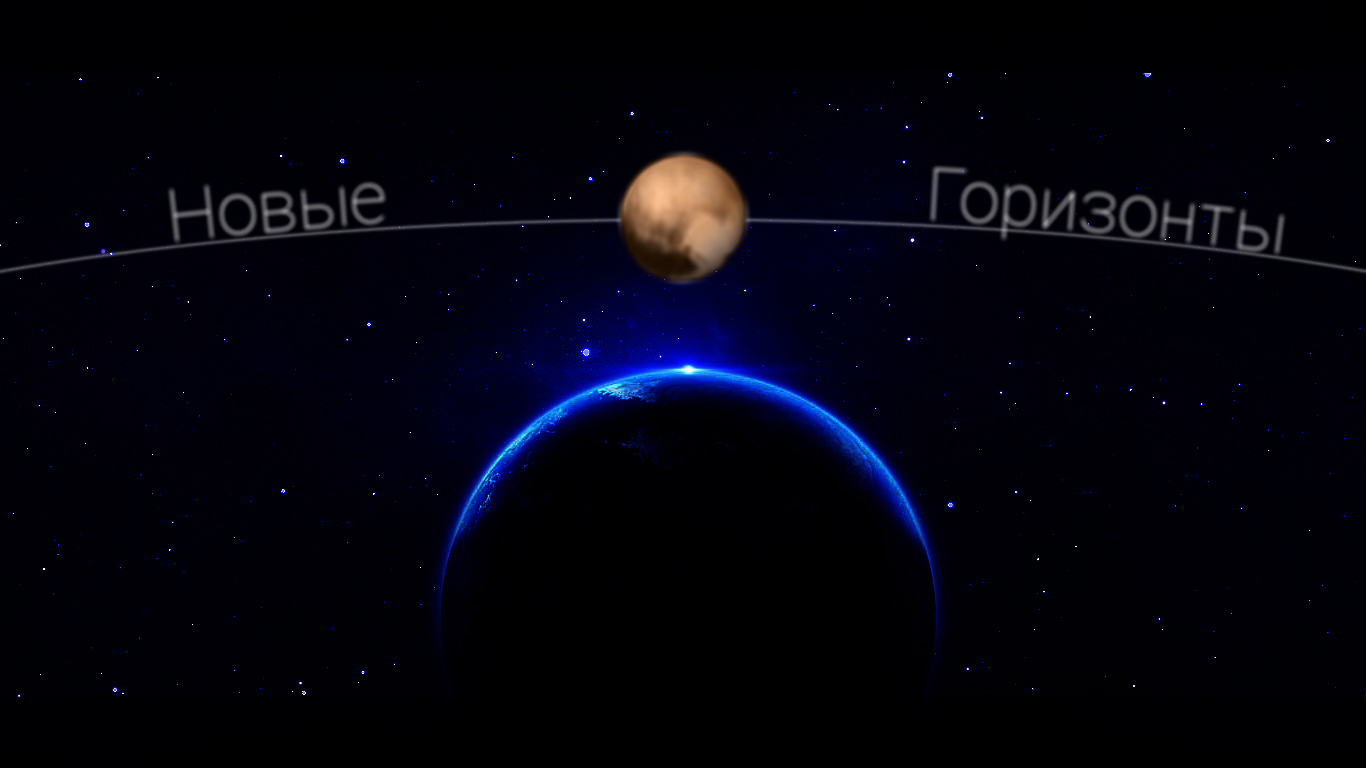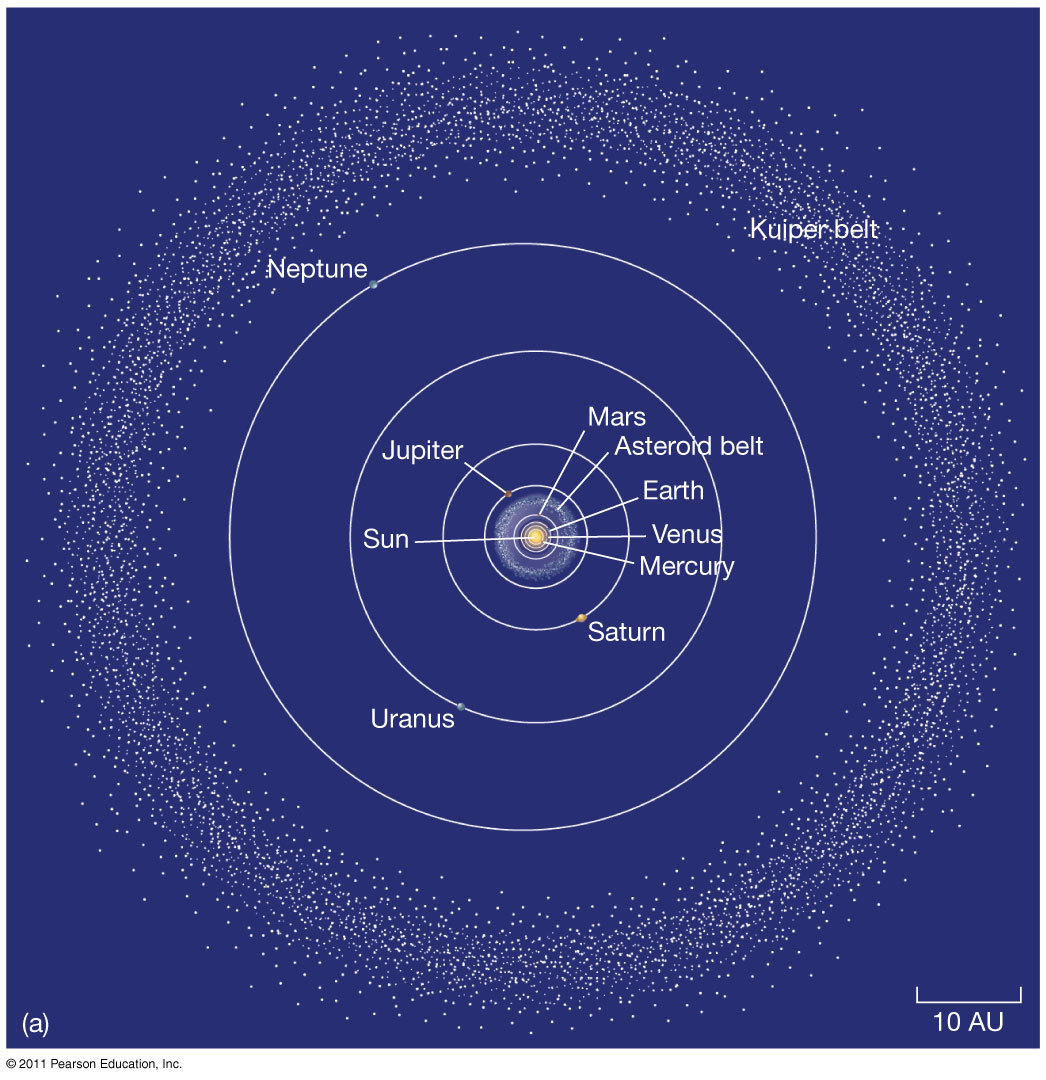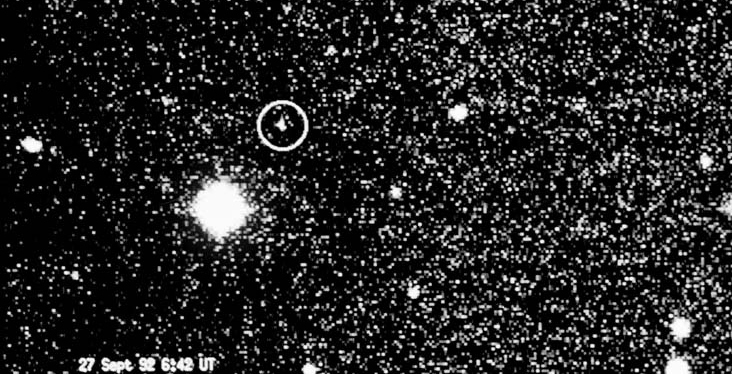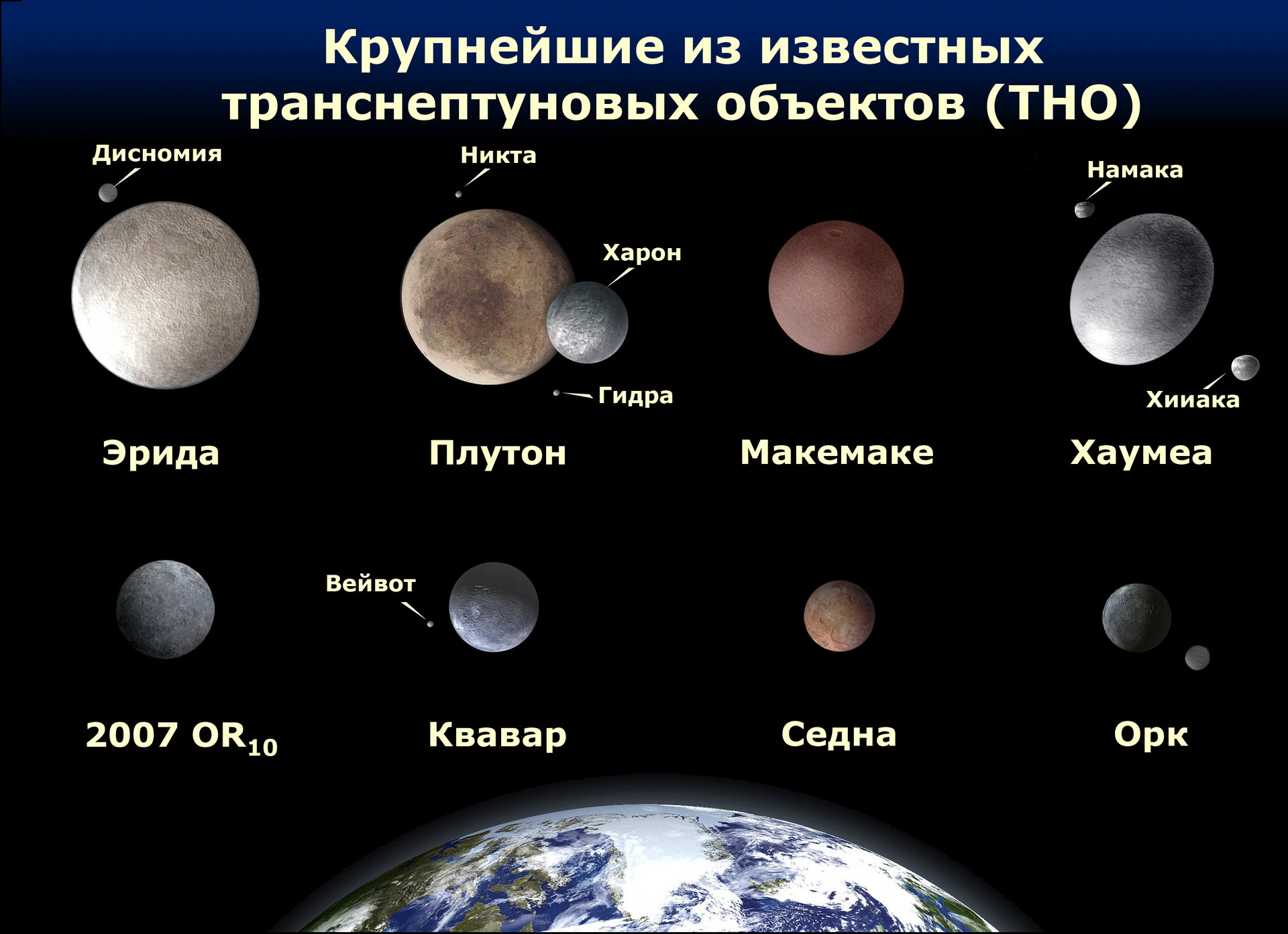How far the New Horizons of the Solar System extend

The news that “we received the most detailed photograph of Pluto and its moons in the history of mankind” has recently been akin to “the Voyager 2 spacecraft set a world record for moving away from Earth.” All this will continue to be very active until July 14, when the New Horizons probe closest approaches to the ex-ninth planet. But let's see if these New Horizons of the Solar System really will be final.
Let us conduct a mental social experiment, as if this phrase were not close to an oxymoron. I’m sure that if you walk down the street and, avoiding your faces completely unburdened with intelligence, ask passers-by the question “what is our solar system made of?”, Then in 90% + cases you will get a list of 8 or 9 planets. Mercury, Venus, Earth, Mars, Jupiter, Saturn, Uranus, Neptune and Pluto. The latter will be optional and, of course, its presence or absence in the answer will depend only on at what age and at what time basic knowledge of astronomy was obtained.

If you go all-in and ask what is next, then most likely you will hear something about the stars from the constellation Centaurus (Centaur). And this, in fact, is the error. And since now we are pushing the New Horizons, let us support a hot topic and talk about what is located there, beyond Pluto.
How it all began
First, we need to sit in an imaginary time machine and go back. Far back. Say 4.5 billion years ago. During the turbulent youth of our Solar System, when it was just being formed.
Around the still very young Sun, together with protoplanets, a huge disk of ice and dust revolved, particles of which accumulated in blocks up to hundreds of kilometers in diameter. But this size was not enough to withstand the gravity of the gas giants. Many of these huge chunks of ice that were not captured and consumed by the planets dangled back and forth from giant to giant.

And although each of these pieces could not significantly affect the planets, due to the huge amount and very long time the following happened. Uranus and Neptune began to move away from the Sun, while Jupiter, on the contrary, approached. This behavior model of the early Solar System was first proposed in the city of Nice. And as we know, astronomers are not really worried about the names (remember the "Big Red Spot" or the "30-meter telescope"), which is why the model was called the "Nice Model".
Thanks to such overtubes, the orbits of these ice blocks were either "moved" farther from the Sun, or turned into elongated ellipses. By the way, it is the events described above, according to our current understanding, that led to the active bombardment of the planets several million years after their formation.
What about today?
What happened earlier is certainly fascinating and interesting, but it is important to us what came of it. What happened to all these celestial bodies that were not lucky enough that after many millions of years, people on Earth would call them “planets"?
According to our current ideas, they are divided into three groups. Kuiper Belt, Broken Disc and Oort Cloud.
Kuiper Belt

As I already said, astronomy does not bother with names, so it’s easy to guess that the Kuiper Belt is a group of objects located in a toroidal space around the Sun outside Neptune’s orbit. It was discovered, naturally, by the Dutch astronomer Gerard Kuiper. All these celestial bodies rotate approximately in the same plane with the planets.
These are the very objects that remained in stable orbits, and which, in fact, were not subject to the gravitational influence of Neptune during the formation of the Solar System.
The Kuiper Belt begins almost immediately after Neptune, at a distance of about 4.5 billion kilometers from the Sun, and ends at a distance of about 7.5 billion kilometers.
Broken Disc
The second region is called the Scattered Disk and consists mainly of objects that were “ejected” by Neptune into distant elliptical orbits that are inclined relative to the plane of rotation of the planets.
The scattered disk intersects slightly with the Kuiper Belt with its internal border, and the outer one, in turn, extends up to 150 billion kilometers. These are approximately 1000 astronomical units, i.e. somewhere 25 times farther than the orbit of Neptune.
Oort Cloud

The last region is called the Oort cloud (guess what was the name of the scientist who proposed this concept). Unlike the Scattered Disk or Kuiper Belt, the Oort Cloud is not limited to the plane of rotation of the planets. This is a spherical cluster of objects that start at about 300 billion km from the Sun (2000 AU) and end at about 10,000,000,000,000 km. And this is no less than one light year. Although, of course, no one will tell us the exact distance yet.
A large proportion of the bodies that make up the Oort cloud are comets with a very large period of rotation around the Sun. Their orbits are so large that when approaching the Sun they move almost along parabolic trajectories.
So what does Pluto and New Horizons have to do with it?

Having been a bit in the very distant past, let us again sit in the time machine we have already used and transport ourselves to times much closer. February 18, 1930. It was then that the astronomer Clyde Tombo discovered the first object from the Kuiper belt. Pluto. Yes, earlier Pluto was mathematically predicted, but it was only possible to directly see it in the second quarter of the 20th century.
It would seem that the theory has been confirmed, now we know where to look. But it took more than 60 years to find the next object from the Kuiper belt.

The next celestial body, called 1992 QB1, was found only in 1992 (remember, everything is very straightforward with the names of astronomers), but after it all went away. The Kuiper Belt began to show itself more and more to humanity. Today we clearly know about more than a thousand objects located outside the orbit of Neptune. I think no one will be surprised at what they are called "trans-Neptune objects." Below in the illustration you can see the comparative sizes of the largest of them (the Earth is also on a scale).

If you managed to think that 1000 objects are a lot, then take your time. According to today's estimates, only in the Kuiper belt there are more than 100,000 objects with a diameter of more than 100 km, while in the Oort cloud there are 1,000,000,000 or more.
Another planet?

This is not about revising the status of Pluto (no one will do this). According to one theory, another planet of the Solar System may exist beyond the orbit of Neptune. We do not yet have any direct confirmation of this statement, but the observation of some comets, as well as some objects of the Kuiper belt, a similar conclusion can be made.
It is clear that so far this is just speculation and no one has directly seen anything with a single telescope, but we know that such a thing is physically possible. We are aware of the existence of planets in orbit tens of billions of kilometers from their stars. The only thing we can say for sure, if there is any planet there, then it is smaller than Jupiter or Saturn. Otherwise, our infrared telescopes would have already seen them.
I repeat, if at the sight of the phrase “ninth planet” you began to have thoughts about all kinds of Nibiru, then drop them immediately. This is just an assumption, no more. Just if suddenly in the future humanity discovers another planet, this will not greatly surprise the scientific community.
Total

Actually, why am I all this. Now a huge amount of news is pouring on us from New Horizons, Dawn, Rosetta from Philae and other probes that tell us about previously unknown details that are very close to us by astronomical standards.
When I was at school, and then at university, I listened to lectures on astronomy, and I had a very clear impression that we know almost everything about space. Partly, probably due to the fact that we know in enough detail about galaxies, nebulae, stars, black holes and other very, very distant objects. From this, we can subconsciously conclude that since we see everything so far, then everyone should know about their own Solar System. But this is not at all true. (Recently, by the way, there was a very interesting article, telling about the reasons for this phenomenon.)
Now New Horizons is approaching Pluto, revealing to us more and more details about this distant and cold world. But this is only one of the most striking objects of the Kuiper belt, and, as I already said, there are a huge number of them. And this makes me think about how we really know little about our universe.
Pluto itself was discovered less than a hundred years ago. This is nothing by the standards of history. And who knows what humanity will open in another hundred years. How far can push the new horizons of his knowledge.
So if you (like me) had the false impression that we know absolutely everything about the cosmos in general and the Solar System in particular, drive these thoughts. Drive them without mercy and enjoy the wonderful heady feeling of the discoverers. After all, the history of space is happening before our eyes, and beyond the horizons there is still a lot of interesting things!
PS
Since this is a post in the Sandbox, let me tell you about who I am. My name is Anton Pozdnyakov, I am the author of keddr.com and a weekly science podcast with an adjacent twitter called #TheBigBeardTheory. If you liked my essay, find me and leave feedback. It is always very important.
Remain curious and may the Force be with you!
Remain curious and may the Force be with you!
